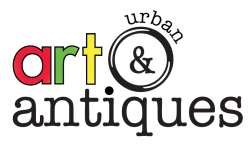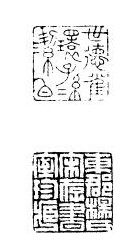Today, at Neal Auction, a Chinese red-dragon seal was sold for $15,000 plus premium, which was as much as 10 times its high estimation. With the provenance of Benjamin March, the curator of Detroit Art Institute, the seal for sure bears some story and significance. Here is what the UAA team found out:
From the auction house description:
A Chinese Carved and Incised Red Dragon Seal, Qing Dynasty, probably Qianlong Period (1736-1795), of rectangular section with the upper surface elaborately carved with a coiled dragon resting above a flaming pearl on a billowing cloud, one facet incised with two characters, unread, the chop carved in positive text, unread, the amber-colored stone with russet veining diminishing upward towards the dragon’s body, height 2 5/8in., presented within an elaborate triple box. Provenance: With Benjamin Franklin March Jr. (1899-1934), Curator of Asiatic Art, Detroit Institute of Arts (1927-1931); thence by descent to the present owner.
What is offered here is a collector seal. Sometimes such a seal is called a poetry seal because it has poems or proverbs inscribed, used on paintings or books. This seal bears six Chinese characters in the seal script (zhuan shu). The six characters, after I flipped the image through Photoshop, are “Shi De Que HuanJie Bai.” It means good deeds will be rewarded by a yellow finch with jade rings, which bless descendants with noble and pure minds. This refers to a famous fable in China:

In the late Han Dynasty, Bao Yang, a nine-year-old boy went to North of Hua Yin Mountain. On the road, he saw a yellow finch, falling under a tree from fighting with a hawk and was surrounded by ants waiting for death. Bao took the bird home and put it in a cloth-cushioned box and fed the bird daily with yellow flowers. After about a hundred days, the bird was recovered and flew away. On the night when the bird left, there came a young man in yellow clothes who saluted Bao and said: I am an ambassador of the Queen Mother of the West. I am forever thankful for your benevolence and kindness in rescuing my life. He also brought four jaded rings to Bao and said “I will bless your descendant of the next four generations and wish their minds as the jade and wish they prosper.” Under the protection of the bird deity, Bao and his descendants of the next four generations all were known for their unblemished political records and relatively affluent, high-ranked official positions. I am not the best translator, so read the original version here if you can read Chinese.
Here is the part that may be more interesting, but it is maddening and illusive. A copy of “Zhou Li”, one of the most important textbooks published in the South Song Dynasty (its Chinese name is 南宋婺州市门巷唐宅刻本) bear a stamp that looks as if from this seal. More importantly, under that stamp, the second stamp indicates that the book was once in the collection of Shaohe Yang (1830 – 1875), who, along with his father, was the most famous avid antique book collector in history. He built a library that housed a lot of single-copied books and perhaps because of that he seldom stamped directly on prominent pages of books. Instead, his stamps are often found on empty pages. Part of his collection was lost in the war period of the 1920s and 1930s. But eventually, the majority of them went to the National Library in Beijing. Interestingly, in 1936, the Library of Congress once held 36 rare books from Yang’s collection, which in the 1960s were returned to the Central Library in Taipei.
I have posted Shaohe Yang’s collector’s stamp here and it is up to readers to judge whether this can be a stunning antique roadshow find or not. I am no expert in collecting Chinese seals, but it looks to me like it is of great beauty itself. Of course, if it can be attributed to some famous antiquarian and book collector, it would be even better. But again, the Chinese show their homage to masters by copying artworks or even seals. It will not surprise me if this is an imitation seal. Plus a stamp on top of Yang’s name stamp does not mean it is also from one of his own seals. It could come from a different person of a different period — more likely earlier since it is on the top.
Today, when the lot opened, the bidding between two or more absentee bids drove the price up to $15,000 immediately. Perhaps, the seal will finally go back to China this time.




Great piece; wonderful research. Can you point me to a resource for deciphering seal script or is it not that simple?
LikeLike